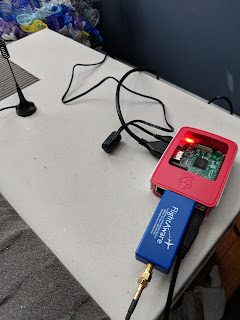2019 Head of the Charles Regatta

On Saturday, October 19th, 2019 and Sunday, October 20th, 2019, I participated as a volunteer in my first ever Head of the Charles Regatta, I visited the Regatta a few years prior to becoming a ham, but this was my first time being there long term. This was the fifty-fifth edition of the Head of the Charles, which first began in 1965. The Head of the Charles Regatta (HOCR) is the world's largest two day regatta. Outside of the major league team sports and the Boston Marathon, the Head of the Charles is probably one of the biggest sporting events in Boston. To quote rowing coach Susan Saint Sing: Regattas such as the Head of the Charles in Boston and the Head of the Schuylkill in Philadelphia are to the rowing world what the New York Marathon and the Boston Marathon are to running. Myself and two volunteers on a walking team. The job of the amateur radio operators at the HOCR is to be the radio communications for the volunteer first aid teams on shore and on the saf...





